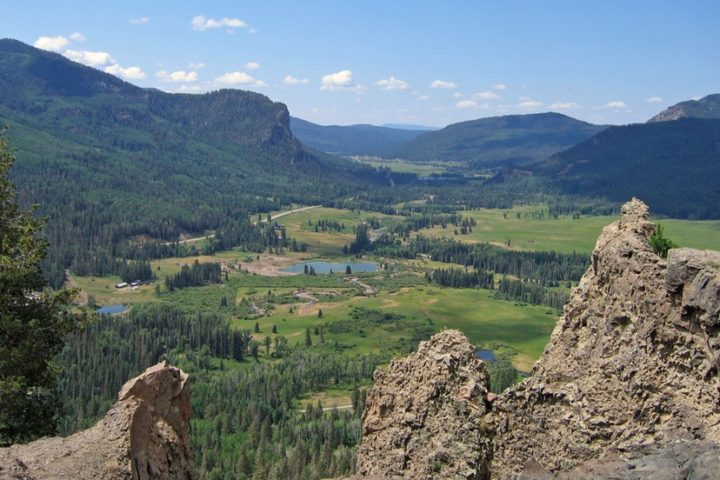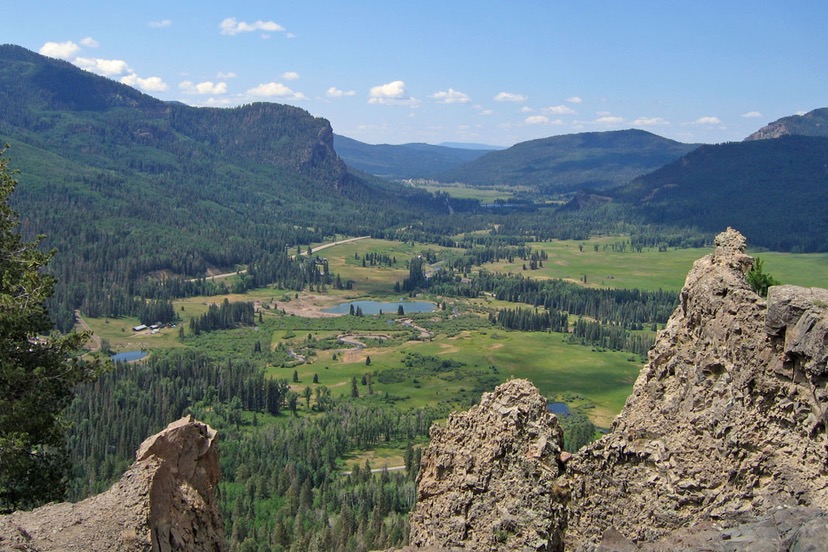I currently serve as an appointed volunteer on the San Juan Water Conservancy District, serving the taxpayers of Archuleta County. The following editorial expresses my own research and opinions, and does not necessarily reflect the opinions of any other SJWCD Board members, nor the decisions and policies of the SJWCD Board as a whole.
When my house in downtown Pagosa Springs was built, back in 1900, it did not have running water, but instead relied upon a well that drew water (presumably) from the underground aquifer connected to nearby McCabe Creek.
When I turned on the water tap this morning — February 16, 2021 — to fill my coffee pot, lo and behold, clean, treated water came streaming out. Such an ordinary event, I didn’t even give it a thought.
I suspect few Pagosa residents can remember a time — not so very long ago — when ordinary people gave considerable thought and effort to the provision of water.
Even so, many intelligent people have been giving considerable thought to running water, here in Pagosa Springs and throughout the American West, for the past 70 years or so — since it became evident that millions of Americans had heeded the advice of J.B.L. Soule and Horace Greeley.
From Encyclopedia.com:
“Go west, young man, go west…” was an expression first used by J.B.L. Soule in the ‘Terre Haute Express’ in 1851. It appealed to Horace Greeley, who rephrased it slightly in an editorial in the ‘New York Tribune’ in 1865: “Go West, young man, and grow up with the country.” When the phrase gained popularity, Greeley printed Soule’s article to show the source of his inspiration. The phrase captured the imaginations of clerks, mechanics, and soldiers returning from the Civil War, many of whom moved west to take up a homestead.
My own house was in fact built by one such Civil War veteran, on a homestead provided by the federal government, on what were then the outskirts of a new Colorado town. Somewhere along the way, the house was piped for running water drawn from the San Juan River. My water still comes from the San Juan River… from the West Fork, in fact, north of town, up in Mineral County.
The West Fork of the San Juan has been a subject of concern, lately, for the San Juan Water Conservancy District and its board of directors and consultants. Back in the mid-1960s, the water bureaucrats working with the US and Colorado governments had an interesting agenda: to build as many dams in the American West as humanly possible, on as many rivers as possible. Toward that end, the Southwest Water Conservation District (SWWCD), serving much of southwest Colorado, filed applications for — and obtained future water rights for — six decent-sized reservoirs in the Archuleta County area — four on the San Juan River, and two on the Piedra River.
Back when Archuleta County was first created by the Colorado state government, the main users of river water were sheep and cattle ranchers. We don’t know the precise amounts, but based on my own research, I would guess that 99% of the surface water diverted in Archuleta County was directed at ranching or farming operations. Today, the number is more like 94%.
According to a public presentation by Durango water engineer Steve Harris at the September 21, 2020 San Juan Water Conservancy District meeting, the SWWCD later abandoned all but three of the reservoirs — and handed the remaining water rights off to the newly-formed San Juan Water Conservancy District. One of the planned reservoirs was to be built, someday, in the Dry Gulch valley. Another was envisioned for a location in Mineral County, on property currently known as Bootjack Ranch — a 39,000 acre-foot reservoir designated as the West Fork Reservoir.

Part of the process of building a reservoir — or pretty much any new water infrastructure — involves holding on to your water rights until you actually finish the project… and that involves proving in water court, every few years, that your proposed use of the water will be not only “beneficial” but also that you actually have the financial and political capability to build the project, someday.
Back in the day — say, 40 years ago — water courts were extremely lenient about approving, and renewing, as-yet-undeveloped water rights. Or so it seems to me. Water was treated almost like an infinitely renewable resource, that could never run out.
The courts are not so lenient in the 21st century. It has become abundantly clear — looking, for example, at the frighteningly low water levels in America’s two largest water reservoirs, Lake Powell and Lake Mead — that the American West is currently drawing water out of its rivers at an unsustainable rate. (The same problem applies to certain underground aquifers in the American West, but that’s a slightly different — and probably more serious — issue.)
As evidence of the changing attitudes in Colorado’s courtrooms, we can look to the now-famous ‘Pagosa I’ and ‘Pagosa II’ decisions by the Colorado Supreme Court, which essentially rejected the application by Pagosa Area Water and Sanitation District (PAWSD) and San Juan Water Conservancy District (SJWCD) for water rights to build a 32,000 acre-foot reservoir in the Dry Gulch valley.
PAWSD and SJWCD later settled for a smaller 11,000 acre-foot storage right — which would nevertheless triple the amount of reservoir storage in Archuleta County.
But following a court-ordered adjustment to the West Fork water rights, SJWCD currently holds rights for a 24,000 acre-foot reservoir, and the board of directors have been discussing what should be done with those water rights. Go back into the courtroom and try to defend them — or even expand them? Abandon them, and focus on more important matters? Attempt to sell the water rights?
The legal deadline for making that decision is June 21, 2021.
To help the board make the best possible decision, SJWCD hired Lakewood-based Wilson Water Group to lay out some options, and make some predictions, so the Board can decide whether to pay an attorney to defend the West Fork Reservoir water rights in water court this summer…
…or do something else?

